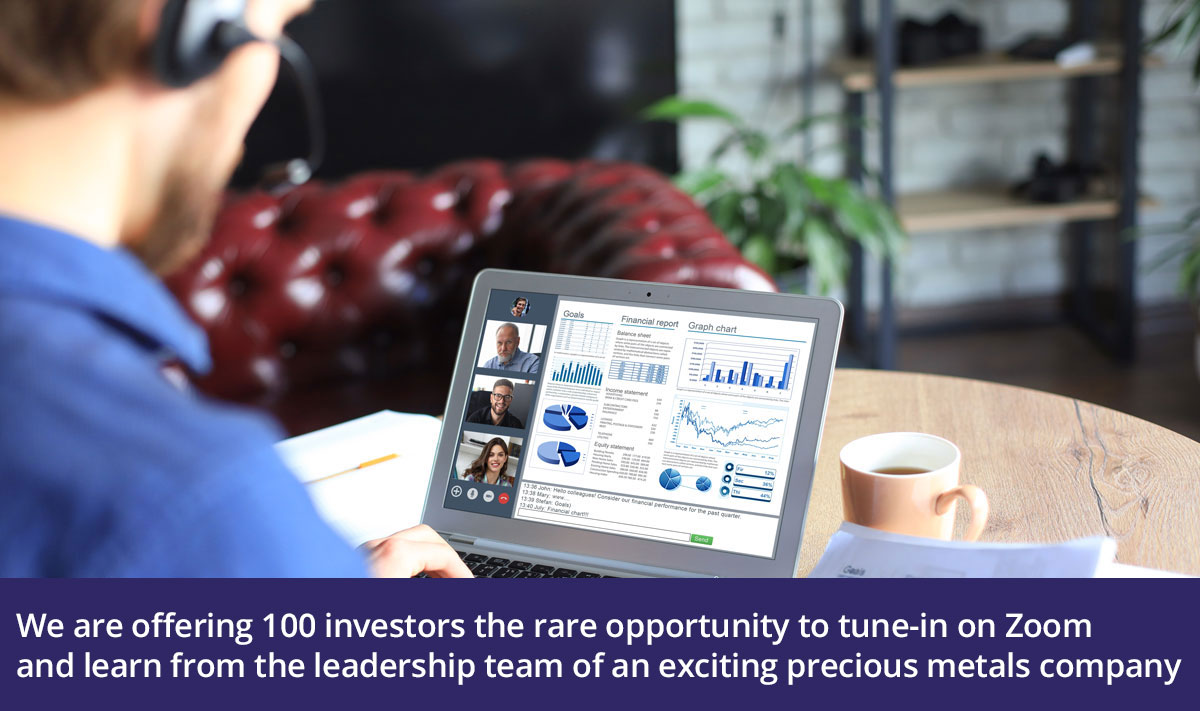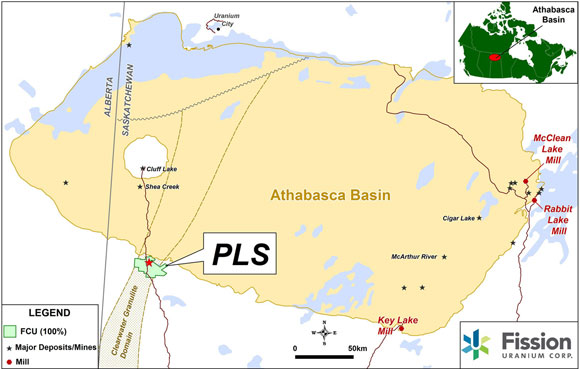The Energy Report: John, oil and gas prices have rallied a bit recently. Have we established a bottom?
John Ragozzino: Yes. In our recently published Global Energy Research "Commodity Price Revisions" report, we are calling for a meaningful V-shaped recovery beginning in the back half of 2015 and into 2016. This is not significantly different from our prior forecasts, as we adjusted our price forecasts to $54 per barrel ($54/bbl) from $53/bbl in 2015, and from $77/bbl to $74/bbl in 2016.
Our thesis on crude oil is largely predicated upon a deceleration of non-OPEC supply growth, as we've seen the U.S. onshore rig count drop by more than half over the last five or six months. Additionally, we are seeing a growing inventory of uncompleted unconventional wells, as operators defer completions to an environment of better pricing and higher returns. When you combine these two factors with a global demand picture that calls for roughly 1.0–1.1 million barrels (1.0–1.1 MMbbl) of annual demand growth over the 2015–2016 time frame, it doesn't take long before the global oversupply situation is largely eroded and we find ourselves back in a state of equilibrium. I think that will be the meaningful catalyst that gets us to higher prices in 2016. Our long-term deck remains unchanged at $84/bbl West Texas Intermediate (WTI) and $90/bbl Brent.
"Upstream MLPs are looking healthier after cutting distributions and making meaningful reductions in spending plans for 2015."
On the gas side, I wouldn't say that statement holds quite as well, because we continue to see new lows on Henry Hub natural gas prices. We can probably expect a continuation of anemic demand growth until the middle 2015, at the very least. That should mark the beginning of a phase of meaningful coal generation retirement, which could result in 2–3 billion cubic feet per day of additional demand. It's not until 2017 and beyond that we begin to see some meaningful changes on the gas demand side, with liquefied natural gas exports ramping up.
TER: Based on your new commodity price forecasts, what's the risk profile of upstream master limited partnerships (MLPs)?
JR: The upstream MLPs are at an elevated risk profile relative to historical levels. At the end of 2014, we believe the upstream MLPs were at a peak risk profile, as prices had been rapidly cut in half immediately after 18 months or so of market backwardation, when many management teams got ahead of themselves and veered off the well-beaten strategy path of robust hedging and price risk aversion measures. Most upstream MLPs typically follow a rolling three- to five-year commodity price risk-aversion strategy that includes the use of fixed price swaps and costless collars to mitigate exposure to price volatility. Many upstream MLPs today are well below their preferred hedge levels due to the temptation to wait for better pricing during that long period of backwardation.
Management teams reluctant to take a $15-$20/bbl discount for their production volumes two to three years out held off on hedging at the worst possible time, as they saw prices cut in half as opposed to the forward curve simply returning to a normal state of contango. When the price continued to fall, a lot of companies that were crude oil-weighted effectively became victims of their own temptations.
"Those companies with additional dry powder to exploit A&D opportunities are going to be able to outperform their peers."
Today, upstream MLPs are looking healthier after cutting distributions and making meaningful reductions in spending plans for 2015. Capital preservation is the main theme. The passage of the spring redetermination period also lifts a material overhang on the group in general. Everyone has sobered up mighty quick in light of reduced oil prices. The outlook for distributions and spending profiles is far more sustainable than what it looked like going into 2015, which goes a long way to reducing risk compared to levels seen in late December and early January.
TER: How do you identify an upstream MLP that meets your investment goals?
JR: It's really pretty simple. A lot of naysayers argue that producing assets in the upstream model don't fit into the MLP structure, because the MLP holds a declining asset that must support a distribution profile that is steady in the worst-case scenario, and ideally growing over the long term. Those two things inherently don't match. But when an MLP employs a disciplined hedging strategy that mitigates commodity price risk, and follows a simple strategy of minimal spending on organic project development while using the cost of capital benefits that the MLP structure potentially affords to grow the business via accretive acquisitions, there is absolutely a place for upstream companies in the MLP structure.
Longer term, I believe that the maturation of the resource base in the U.S., concurrent with a period of such vast discovery on the unconventional side, has led to a thirst for capital by the exploration and production (E&P) C corporations. This has facilitated a symbiotic relationship between the upstream MLPs and the E&Ps, and resulted in widespread divestitures of many mature, shallow decline-type assets that were likely not getting much appreciation from C-corp investors. Those are the ideal assets for an upstream MLP because they have very low decline rates, low capital intensity levels and, ultimately, they're far more suited to sustaining a distribution in the long term.
As far as what we look for in specific companies, balance sheet health and liquidity position are at the top of the list. I also look carefully at the asset profile. Ideally it should be a diverse mixture of commodity products. You don't want to be overly levered to oil or gas. There was a time when it was cool to be 100% crude oil-weighted, but you can see how quickly that turns when prices are cut in half. So a diverse production profile is important. A quality asset base, meaning low decline rates (10-12%), and low capital intensity, are also important. Finally, I look for a strong management team, one that is well aligned with unit-holder interests.
TER: What is an example of a company that meets your criteria?
JR: Linn Energy LLC (LINE:NASDAQ) is a turnaround story that, 18 months ago, was probably dealing with upward of a 23% annual production decline rate on a year-over-year basis. Through a series of large divestitures and asset acquisitions, Linn has been able to wear that down to something more along the lines of 15% or so. Something in the 10–12% range would be ideal, but the company is moving in the right direction.
"We are calling for a meaningful V-shaped recovery beginning in the back half of 2015 and into 2016."
Management has also strategically positioned itself to take advantage of both organic development opportunities and potential acquisition & development (A&D) opportunities by partnering with large private equity partners such as GSO Capital Partners (Blackstone Group L.P.) and Quantum Energy Partners.
The bottom line is that this company should be able to continue to grow production and, ultimately, cash flow, without being so heavily reliant upon the traditional public debt and equity markets. Once Linn's balance sheet is de-levered to a more comfortable level and distribution growth is able to resume, the stock will be more attractive to investors. A healthy balance sheet and sustainable distribution growth is ideally what investors are looking for, and this should drive capital appreciation through yield compression.
TER: Linn made almost half of all the acquisitions made by upstream MLPs since 2008. How is it finding synergies, cutting costs and integrating all those companies?
JR: On the operations side, Linn's operations and asset integration team is second to none. The team has effectively created an acquisition machine. Over the last 18 months, the company significantly turned the asset base over, taking a high-decline asset base with a lot of production and undeveloped acreage in unconventional plays such as the Granite Wash and the "Hogshooter" and, through a series of asset swaps and divestitures, moved out of these plays and into plays like the Hugoton Basin. These plays are far less sexy and fun to watch, but they make a lot more sense for the upstream MLP model. For a company its size, Linn is actually quite nimble.
TER: You aren't worried about the cut to its shareholder distribution?
JR: Only a handful of companies in the group have not cut their distributions at this point. In light of the sector-wide lack of hedging, I see cutting distributions as a sign of being proactive and realistic about the world we now live in, rather than of weakness. Linn was the first to cut its distribution in January. It may have been a bit early, but it was the right decision. Others followed suit soon thereafter.
TER: What other upstream MLPs are you following?
JR: Another name we like is Memorial Production Partners LP (MEMP:NASDAQ). The thesis is pretty simple. It is one of the only names that remained disciplined throughout this period of volatility and falling commodity prices. On top of that, the company has had a good run in the acquisition market, growing quickly and efficiently. It has taken its largely natural gas-weighted production profile and turned it into a much more diversified product split. Most importantly, Memorial is one of the most aggressive hedgers of the group, managing a hedge book that extends well into 2019. Management stuck to the script: It removed all the emotion from the decision-making process and followed the playbook as it was written. That is paying off in the stock price, compared to a lot of its peers.
TER: Memorial just did a redetermination and reduced the borrowing base by 9.7%. Is it still liquid enough to take advantage of acquisition opportunities?
JR: The conservatism demonstrated in Memorial's hedging strategy has allowed the company to preserve a far healthier balance sheet and liquidity profile than a lot of its peers. Plus, the company was lucky enough to tap the equity markets right before the crack of the commodity and entered the redetermination season with close to $900 million ($900M) in liquidity. The expectation going into the redetermination was for a 10–15% reduction in the borrowing base. For a company of its size and with nearly $1 billion on hand, there is plenty of room for an adjustment of the borrowed base to the tune of about 9%. This move leaves Memorial well positioned to remain quite opportunistic for any emerging A&D opportunities.
TER: Is there a third company you wanted to talk about?
JR: The only other upstream MLP that we are currently recommending is EV Energy Partners L.P. (EVEP:NASDAQ). This name is largely natural gas-weighted, but the company recently announced the divestiture of its Utica East Ohio midstream project for $575M in cash to Williams Partners L.P. (WPZ:NYSE). That was a very attractive price in our opinion, providing the company with a meaningful booster shot of liquidity to the balance sheet. This cash is going to allow EV Energy to pay down all its revolving debt and ultimately emerge as one of the best-positioned upstream MLPs for future A&D.
"We can expect a continuation of anemic demand growth for natural gas until the middle 2015."
We are getting to a point where the bid-ask spread on producing assets is settling down and is likely to find some sort of equilibrium soon. I expect the acquisition activity to pick up in H2/15 and 2016. Those companies with additional dry powder to exploit A&D opportunities are going to be able to outperform their peers. EV Energy Partners will be sitting on $650M in cash. The addition of a mature, producing asset worth $500M or more could do a lot to reshape its current asset base, diversifying it into a more balanced product split, and ultimately yielding significant accretion to distributable cash flow per unit. This should help move the company back to its original strategy, which was a traditional, steady state of distribution growth. Following the path of most of its peers, EV Energy's early February distribution cut and reduced capital spending outlook leaves the company in a healthy position currently. I would like to see it get back to a sustainable 3–4% distribution growth number, and I think that this divestiture and reinvestment process is likely the catalyst to do that.
TER: What about other parts of the MLP space? Do you have other companies we should be watching?
JR: The one name that I follow in the refining and specialty products business is Calumet Specialty Products Partners, L.P. (CLMT:NASDAQ). This company is largely viewed as a refining name, which in the current environment is being helped by a favorable fundamental tailwind given the rally we've seen in crack spreads over the last couple of months.
But if we go back to the end of 2014, it was a different story. The stock bottomed out at about $19-and-change/unit in late 2014, almost simultaneously with a bottom in crack spreads. Then crack spreads skyrocketed almost $10/bbl in less than a week, kicking off a strong rally in Calumet units. There has clearly been a lot of momentum behind units. I admit, we missed the opportunity to upgrade Calumet at its lows. However, following a secondary offering in mid-March, the stock pulled back over 14%, and we decided to get more aggressive on the premise that the fundamentals in the refining market were certainly reflective of better things to come on the refining side of the business.
With Calumet, however, the most important thing to focus on is the specialty products side of the business, as opposed to the refining side. While the fuels business is in a good fundamental state right now, and the company does employ a risk mitigation strategy that uses hedges, similar to an upstream MLP, to lock in refining margin, it's a commoditized market and very volatile.
On the specialty products side of things, Calumet produces some 5,000 different products and distributes to customers all over the world. These are very high-margin products with extremely sticky pricing. This means these products benefit when we see a reduction in crude oil prices—products like WD-40 or Royal Purple automotive lubricant. These products are ubiquitous and don't fluctuate with changes in oil prices. Just in Q4/14 alone, the company posted a record gross profit per barrel on the specialty products side of the business, a quarter during which we saw an average WTI crude price north of $70/bbl.
The Street has largely put the company in the penalty box over the last two years, just because of weak operating performance on poorly timed maintenance downtimes for the refineries, digestion of acquisitions and cost overruns—things that were outside Calumet's control and one time in nature. Now that is cleared up, and we have a clear look at the business and what it can do going forward. I think that we're going to see Calumet outperform its historical levels of operating performance and exceed estimates.
I think we are in the early innings of Calumet's upward trend and strong financial performance on the specialty products side of the business. Additionally, after the recent offering, the company has secured the necessary funding to complete its pipeline of organic growth projects, which should contribute nearly $140M in additional EBITDA (earnings before interest, taxes, depreciation and amortization) per year over the next 12 months or so. Once the remaining capex on these projects is completed, we expect the company to resume distribution growth.
TER: What final words of wisdom do you have for investors already in the MLP space, or curious about getting into the space this year?
JR: A fairly negative sentiment is still lingering around the upstream MLP space. I would say that there certainly is opportunity to be had in the sector right now, but given the underhedged profile of a lot of the upstream names—and the uncertainty that surrounds the commodity market—investors still need to be cautious about their investment decisions and can't be tempted by some of the attractive yields out there. They need to do their homework and make sure they're making prudent decisions and looking for the higher quality names. Selectivity will be key to picking winners versus losers over the next 12–18 months. Like I said earlier, it's going to come down to those companies that are well situated in terms of their liquidity position, balance sheet health, hedge profiles, production diversity and, ultimately, staying power.
If we see our price deck come to fruition, and there is a meaningful V-shaped recovery, and we find ourselves back upward of $77–80/bbl by the end of 2016, then it's a bit of a different story. The situation would be more universally attractive. But until that happens, the best-of-breed investment strategy will ultimately win.
TER: Thank you for your time.
 John Ragozzino, CFA, joined RBC Capital Markets in 2012, bringing with him more than nine years of experience in institutional equity research. He has followed a number of different sectors including media, entertainment, gaming, and most recently energy. Ragozzino has remained focused on the energy space through his coverage of various subsectors including oil and gas exploration & production, upstream master limited partnerships (MLPs) and oil and gas royalty trusts, the latter two of which he currently covers as one of RBC's three analysts dedicated to the broader MLP space. Before joining RBC, he worked in institutional equity research for a number of large and mid-size investment banks, including Robert W. Baird, Stifel Nicolaus Weisel, Wells Fargo and BMO. He holds a bachelor's degree in business administration (finance) from the University of Colorado at Boulder. He is a CFA charterholder.
John Ragozzino, CFA, joined RBC Capital Markets in 2012, bringing with him more than nine years of experience in institutional equity research. He has followed a number of different sectors including media, entertainment, gaming, and most recently energy. Ragozzino has remained focused on the energy space through his coverage of various subsectors including oil and gas exploration & production, upstream master limited partnerships (MLPs) and oil and gas royalty trusts, the latter two of which he currently covers as one of RBC's three analysts dedicated to the broader MLP space. Before joining RBC, he worked in institutional equity research for a number of large and mid-size investment banks, including Robert W. Baird, Stifel Nicolaus Weisel, Wells Fargo and BMO. He holds a bachelor's degree in business administration (finance) from the University of Colorado at Boulder. He is a CFA charterholder.
Want to read more Energy Report interviews like this? Sign up for our free e-newsletter, and you'll learn when new articles have been published. To see a list of recent interviews with industry analysts and commentators, visit our Interviews page.
DISCLOSURE:
1) JT Long conducted this interview for Streetwise Reports LLC, publisher of The Gold Report, The Energy Report, The Life Sciences Report and The Mining Report, and provides services to Streetwise Reports as an employee. She or her family own shares of the following companies mentioned in this interview: None.
2) The following companies mentioned in the interview are sponsors of Streetwise Reports: None. The companies mentioned in this interview were not involved in any aspect of the interview preparation or post-interview editing so the expert could speak independently about the sector. Streetwise Reports does not accept stock in exchange for its services.
3) John Ragozzino: I own, or my family owns, shares of the following companies mentioned in this interview: None. I personally am, or my family is, paid by the following companies mentioned in this interview: None. My company has a financial relationship with the following companies mentioned in this interview: A member company of RBC Capital Markets or one of its affiliates managed or co-managed a public offering of securities for Calumet Specialty Product Partners LP in the past 12 months. A member company of RBC Capital Markets or one of its affiliates received compensation for investment banking services from Calumet Specialty Product Partners LP in the past 12 months. RBC Capital Markets is currently providing Calumet Specialty Product Partners LP with investment banking services. RBC Capital Markets has provided Calumet Specialty Product Partners LP with investment banking services in the past 12 months. A member company of RBC Capital Markets or one of its affiliates expects to receive or intends to seek compensation for investment banking services from Calumet Specialty Product Partners LP in the next three months. RBC Capital Markets is currently providing Linn Energy LLC with non-securities services. RBC Capital Markets has provided Linn Energy LLC with investment banking services in the past 12 months. A member company of RBC Capital Markets or one of its affiliates received compensation for investment banking services from Linn Energy LLC in the past 12 months. A member company of RBC Capital Markets or one of its affiliates managed or comanaged a public offering of securities for Linn Energy LLC in the past 12 months. A member company of RBC Capital Markets or one of its affiliates managed or comanaged a public offering of securities for Memorial Production Partners LP in the past 12 months. A member company of RBC Capital Markets or one of its affiliates received compensation for investment banking services from Memorial Production Partners LP in the past 12 months. RBC Capital Markets is currently providing Memorial Production Partners LP with non-securities services. RBC Capital Markets has provided Memorial Production Partners LP with investment banking services in the past 12 months. I was not paid by Streetwise Reports for participating in this interview. Comments and opinions expressed are my own comments and opinions. I determined and had final say over which companies would be included in the interview based on my research, understanding of the sector and interview theme. I had the opportunity to review the interview for accuracy as of the date of the interview and am responsible for the content of the interview.
4) Interviews are edited for clarity. Streetwise Reports does not make editorial comments or change experts' statements without their consent.
5) The interview does not constitute investment advice. Each reader is encouraged to consult with his or her individual financial professional and any action a reader takes as a result of information presented here is his or her own responsibility. By opening this page, each reader accepts and agrees to Streetwise Reports' terms of use and full legal disclaimer.
6) From time to time, Streetwise Reports LLC and its directors, officers, employees or members of their families, as well as persons interviewed for articles and interviews on the site, may have a long or short position in securities mentioned. Directors, officers, employees or members of their families are prohibited from making purchases and/or sales of those securities in the open market or otherwise during the up-to-four-week interval from the time of the interview until after it publishes.




























































